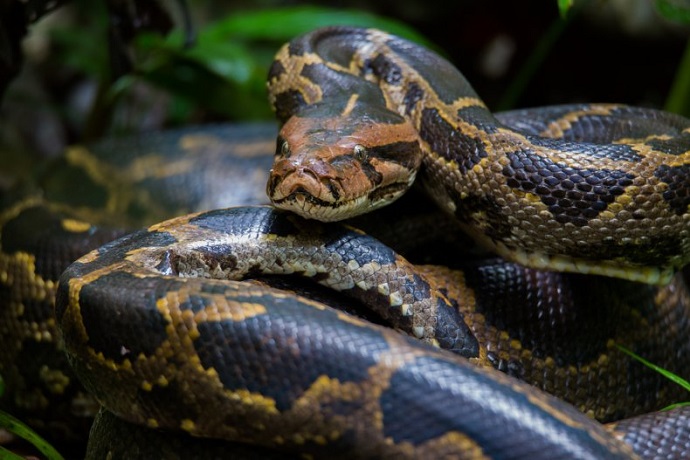
Cincinnati [US]: Burmese pythons are enormous snakes that may reach lengths of over 18 feet and weigh 200 pounds. They are also large eaters, capable of taking on prey as big as deer. The University of Cincinnati's biologists discovered that a python's appetite isn't merely limited by the size of its head and body. They developed extremely elastic skin between their lower jaws, which enables them to eat prey that is up to six times larger than snakes of comparable size.
The research was published in the journal Integrative Organismal Biology and was partially supported by a grant from the National Science Foundation. Since most snakes consume their prey whole, their mouths must be large to fit a meal. Snakes' lower jawbones are not connected like ours are, which allows them to expand wide.
"In pythons, the elastic skin between the lower jaws on the left and right is very different. Stretchy skin accounts for about 40% of their entire gape area on average "Bruce Jayne, the primary author and a biology professor at UC, remarked. "Their gape is tremendous, even after you account for their big heads."
Constrictors are pythons. They bite their prey, encircling it with their strong coils to sever the life-giving blood supply, then slowly consume it whole. A snake gets more energy from a meal the larger the prey is. That frees up pythons from having to hunt as frequently, which entails significant risk in an environment full of dangerous predators and busy roadways.
Brown tree snakes, a minimally venomous arboreal specialist that hunts birds and other animals in the forest canopy, were another kind of snake Jayne researched in addition to pythons. When brown tree snakes were brought to Guam in the 1950s, numerous bird species perished.
Jayne measured the size and weight of potential prey animals in addition to the snakes. As a result, Jayne was able to forecast prey sizes and compare the relative merits of eating various species, including alligators, chickens, rats, and deer.
According to the study, little snakes gain more from a small increase in gape size in terms of relative prey mass. Compared to other snakes their size, offers young pythons an early edge in pursuing a wider variety of prey, according to Jayne.
Read also: Researchers find macrophages may be scavenger cells of the immune system
Being large also prevents snakes from becoming food for other animals. Wading birds, minks, raccoons, alligators, and other snakes are just a few of the predators that catch snakes. Alligators are really the only animals that can consume those pythons once they reach a size that is reasonable, according to Jayne. And alligators are eaten by pythons.
Burmese pythons are destroying the ecology of Everglades National Park, where they were introduced as a result of the release of captive animals from the exotic pet trade in the 1980s, just like invasive brown tree snakes did in Guam.
Ian Bartoszek, a co-author of the study, manages environmental science projects for the Conservancy of Southwest Florida and oversaw a project to track pythons. In order to locate female snakes before they may deposit additional clutches of eggs, male snakes are implanted with radio transmitters during the breeding season. A large female python is capable of laying over 100 eggs.
In their bellies, scientists frequently discover deer hooves and the remnants of other large animals. One python was seen by Bartoszek regurgitating a mature white-tailed deer. As a result of one species, the Burmese python, the Everglades ecosystem is altered in real-time, according to Bartoszek.
The good news is that pythons don't often bite humans.
Bartoszek claimed that only female wild pythons defending their nests have provoked defensive encounters in him.
Driving there is considerably riskier than working with snakes, he declared. (ANI)







